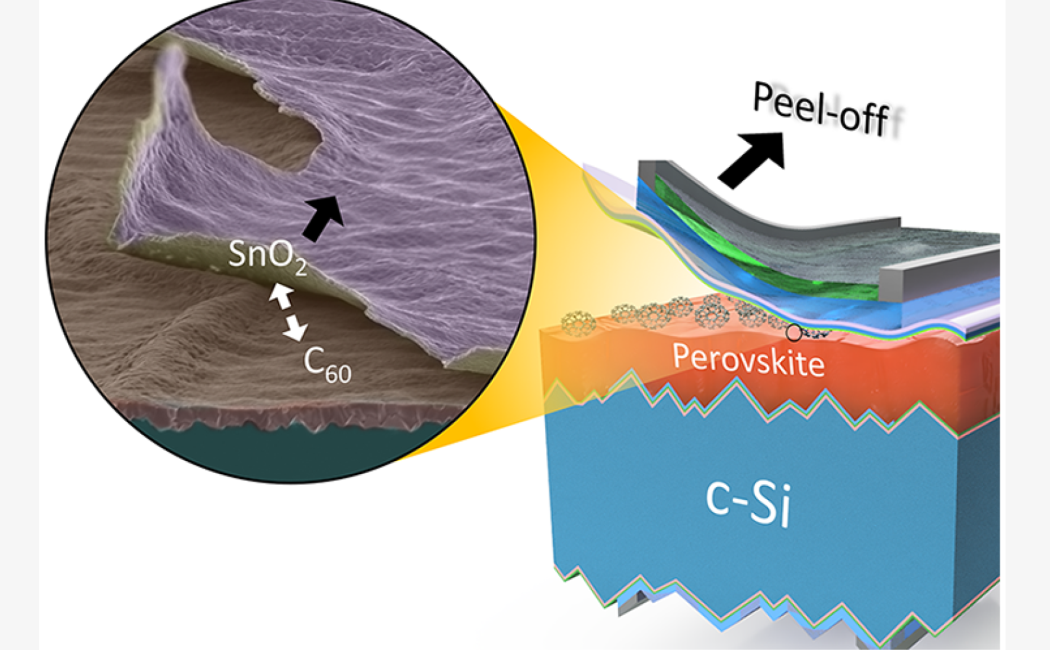Mechanical Reliability of Fullerene/Tin Oxide Interfaces in Monolithic Perovskite/Silicon Tandem Cells
Michele De Bastiani, Giovanni Armaroli, Rawan Jalmood, Laura Ferlauto, Xiaole Li, Ran Tao, George T. Harrison, Mathan K. Eswaran, Randi Azmi, Maxime Babics, Anand S. Subbiah, Erkan Aydin, Thomas G. Allen, Craig Combe, Tobias Cramer, Derya Baran, Udo Schwingenschlögl, Gilles Lubineau, Daniela Cavalcoli, and Stefaan De Wolf
ACS Energy Lett. 2022, 7, 827−833
High-efficiency perovskite-based solar cells comprise sophisticated stacks of materials which, however, often feature different thermal expansion coefficients and are only weakly bonded at their interfaces. This may raise concerns over delamination in such devices, jeopardizing their long-term stability and commercial viability. Here, we investigate the root causes of catastrophic top-contact delamination we observed in state-of-the-art p-i-n perovskite/silicon tandem solar cells. By combining macroscopic and microscopic analyses, we identify the interface between the fullerene electron transport layer and the tin oxide buffer layer at the origin of such delamination. Specifically, we find that the perovskite morphology and its roughness play a significant role in the microscopic adhesion of the top layers, as well as the film processing conditions, particularly the deposition temperature and thesput tering power. Our findings mandate the search for new interfacial linking strategies to enable mechanically strong perovskite-based solar cells, as required for commercialization.


